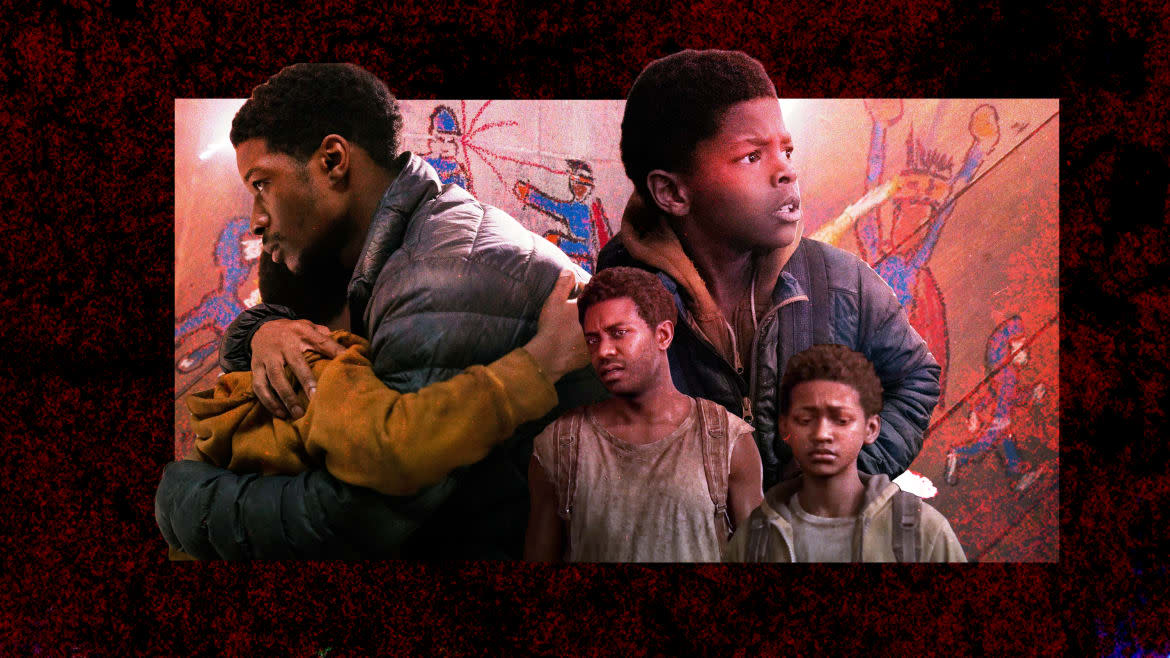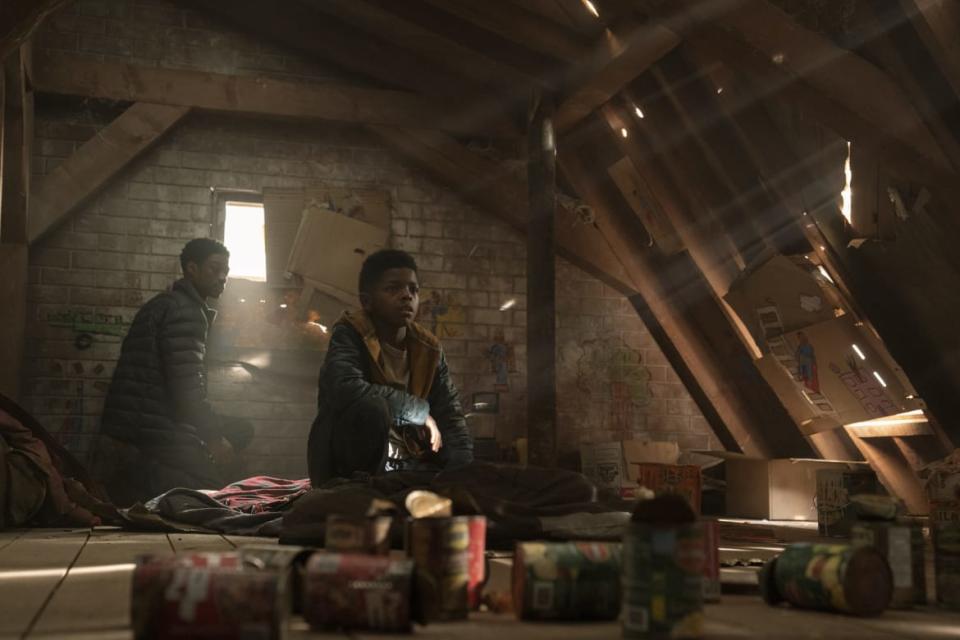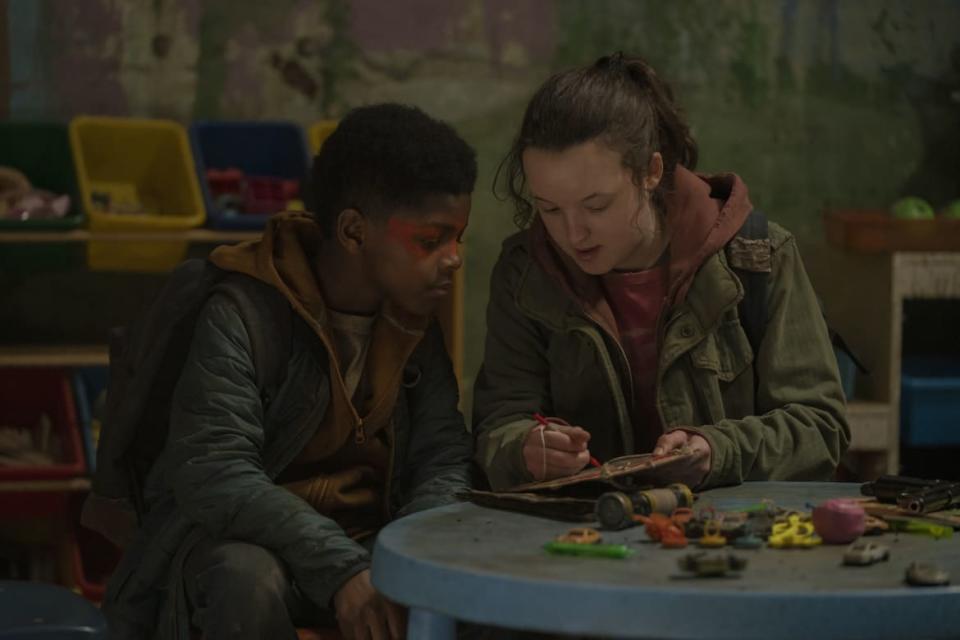‘The Last of Us’ Told a Devastating Story About Parenting

Episode five of The Last of Us does something crucial: It clarifies that it is not just a show about surviving an apocalypse. It is a show about family—and the things that we must do to protect our own, even if they are just the family we have found for ourselves.
This has not been more apparent than through the story of Henry (Lamar Johnson) and Sam (Keivonn Woodard), two characters who appear in the video game but have a much deeper, more emotionally potent story told here. The brothers do more than become new figures in Joel and Ellie’s miserable journey—they become symbols for the relationship the pair is building.
(Spoilers ahead for The Last of Us.)
‘The Last of Us’ Episode 5 Recap: Death Comes to Town
From the first moment you meet Henry and Sam in the video game, it’s obvious that these two are unlike anyone you’ve met thus far on your journey. Sure, the fact that your first interaction with Henry is him attacking your character, Joel, from behind isn’t perfect. But Henry and his younger brother are neither bloodthirsty hunters nor pro-establishment assholes. And somehow, with all the bloodshed and horrors around them, they still aren’t as jaded as everyone else around them, either.
The HBO adaptation maintains the spirit of the two, as is clear in the scene where they’re introduced. Their meet-cute with our heroes in the show is similar to what happens in the game, just with a few more guns. Another difference is that we’re left wondering if Joel (Pedro Pascal) and Ellie (Bella Ramsey) are in real danger, once they wake up with the brothers pointing guns in their faces. But in episode five’s opening scene, we discover that Henry and Sam are also on the run from Kathleen (Melanie Lynskey) and her army—and thus Joel and Ellie’s friends, not foes.
From there, the adaptation does what it has been doing best: It gives these characters who are explored in the video game a richer, deeper backstory than the game could give them. This is not to say the game doesn’t develop Henry and Sam’s characters and backstory. But there is something powerful about seeing their story from their own perspective, something the video game wasn’t capable of doing.

In the game, Joel and Ellie meet the brothers by happenstance in Pittsburgh, as they are trying to flee a group of hunters. Henry informs Joel that he and his brother Sam were traveling with a bigger group to find the Fireflies but got separated by the chaos and hunters in the city. Joel and Henry decide to work together to get out of the city; they will travel together until they get to a radio tower in a nearby suburb where the rest of Henry’s group are hopefully waiting.
Traveling with Henry and Sam binds them not just to Joel and Ellie, but the player too. Even when you, the player, are blindingly angry at Henry and Sam for ditching Joel and Ellie when a tank starts chasing the group during the escape from Pittsburgh, you can’t help but feel a closer connection to them when Henry saves both Ellie and Joel from drowning—that’s what happens when you’re a tight-knit group of travelers. The biggest bonding moment, however, happens in the sewer, where the crew discover the remainders of a sewer civilization. Ellie and Sam get to be kids together, while Joel fights side by side with Henry against Infected. Here, you truly find comfort in having these two companions with you on this perilous journey.
In the game, you spend quite a bit of time with Henry and Sam, because it can take longer for the story to unfold, especially if you are prone to dying a lot. But for the HBO series, co-creators Craig Mazin and Neil Druckmann had a single episode to tell Henry and Sam’s entire story and make us care for them as we would in the game—otherwise, the episode’s devastating ending wouldn’t hit as hard. And they did it through a perfectly crafted backstory that not only gave depth to the characters but highlighted major themes of The Last of Us.
Finding Pedro Pascal’s Perfect ‘The Last of Us’ Jacket Was a Herculean Effort
In the show, Henry and Sam were not separated from a larger group or even trying to find the Fireflies; they are simply trying to get out of Kansas City before Kathleen can find them. Henry was a government snitch (known as a FEDRA collaborator) who, in order to get medicine for Sam, told FEDRA the whereabouts of Kathleen’s brother Michael, the leader of the rebellion. Kathleen has been hunting for Henry and Sam ever since, and especially since her squad took over the city.
This piece of information doesn’t exactly endear you to Henry a whole bunch, because he did sacrifice a man. However, the reason he gave up Michael was admirable—he wanted to save his brother. This idea of how heroics depend on the perspective is a vital theme to The Last of Us. In Sam’s eyes, Henry is a hero; his older brother got the medicine Sam needed to help him get better. But to Kathleen, Henry is the boy that got her brother killed, and she won’t stop until she gets revenge. Complicating Henry and Sam’s story by making their motivations morally gray, something so core to the video game, was a bold move that really paid off.
There is a moment in the episode when Henry is describing to Joel his decision to sell-out Kathleen’s brother to save Sam. It’s clear from the fierce look in his eyes that, despite everything, he would do it again. His love for his brother is an important part of his character, which the show makes sure to clarify upfront. There’s a tender moment early on, when Henry brings out a giant bag of crayons and joins Sam in drawing superheroes all over the walls of their safe house, that humanizes these characters in a way the game never had time to do.

Watching Henry, Sam, Joel, and Ellie together later in the episode also underscores the key reason Henry and Sam are here: to hold a mirror up to our protagonists, both for them and us. As Henry and Joel watch Ellie and Sam read comic books together when they find an abandoned underground classroom to hide out in, they quietly realize they are both parenting traumatized, orphaned children. Sam’s older brother Henry is the only person he has left to protect him, let alone communicate with him, as Sam is deaf (an addition made for the show). And Joel and Ellie are not related, but five episodes in, Ellie is successfully breaking down Joel’s walls and getting him to care for her as a daughter.
Watching Henry and Sam’s demise, then, is devastating: It’s as if we are watching a possible future for Joel and Ellie, where one’s death means the loss of the other too.
Sam is bitten by an Infected, something he only reveals to Ellie; in the morning, he has completely changed, attacking Ellie. In the end, Henry is the one that has to shoot Sam dead. It’s gut-wrenching to watch, but it is Johnson’s performance as Henry that makes you unable to look away. In the blink of an eye, Henry goes from shock to disbelief at what he just did on impulse. He quietly asks Joel, “What did I do?” with a strong sense of anguish in his voice. No amount of rational thinking can convince him that killing his brother was necessary, and so he shoots himself in the head and dies too.
This scene, whether in game format or TV format, never gets easier to watch. But the show made Henry and Sam’s deaths more vital to the storyline by making Henry and Sam fuller people, ones we quickly became emotionally invested in. As Joel and Ellie walk away from the shallow graves they buried for their now-deceased friends, Mazin and Druckmann further cemented their importance to the overall story of The Last of Us.
Get the Daily Beast's biggest scoops and scandals delivered right to your inbox. Sign up now.
Stay informed and gain unlimited access to the Daily Beast's unmatched reporting. Subscribe now.


